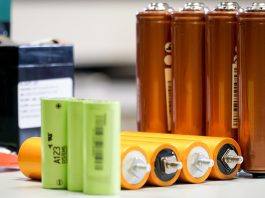Researchers from the University of Surrey are unravelling the workings of carbon capture technology to advance the UK’s mission to reach net zero emissions.
An expert in carbon capture technology at the University of Surrey has stated that the UK can lead the way in technologies that capture carbon dioxide and convert them into useful products, like hydrogen.
The comments come after Surrey’s research team conducted a first-of-its-kind experiment to understand how their new carbon capture technology works.
The technology developed by the team uses a switchable dual function material (DFM) and capture and converts carbon dioxide into green fuels and other important chemicals.
About the new carbon capture technology
The team’s switchable DFM, NiRuNa/CeAl, is formed of nanoparticles of a bimetallic alloy and a dispersed Na-based adsorbent.
Combined, these elements create a unique material for capturing and converting CO2. The technology does this in three chemical reactions – offering versatility in an ever-changing energy landscape.
Dr Melis Duyar, lead author of the study from the University of Surrey, said: “Pursuing advanced carbon capture technology is more than just the right thing to do for our planet—it’s an exceptional opportunity for the UK to emerge as a global front-runner, leveraging the vast potential of green energy products born from this process.
“We’ll continue to apply the lessons learnt from this study and work with others in the higher education sector and industry to continue to mature this process.”
The new technology can be used to capture CO2 in three important chemical reactions
The researchers found that NiRuNa/CeAl can be used to capture CO2 in three important chemical reactions.
Converting CO2 into methane
The carbon capture technology combines carbon dioxide with hydrogen to produce methane and water.
Reverse water-gas shift
The second chemical reaction involves the conversation of CO2 and H2 into carbon monoxide and water. This process can be used to make sustainable synthesis gas which is a mixture of carbon monoxide and hydrogen.

Using techniques that already exist within the chemical industry, this synthesis gas can be converted to a vast variety of chemicals. This will help us move closer to a circular economy.
Dry reforming of methane
This process involves the conversion of methane and carbon dioxide into synthesis gas. Underutilised hydrocarbon resources such as biogas are taken advantage of in this reaction.
The team’s carbon capture technology offers the opportunity for decarbonisation and carbon dioxide recycling in the absence of green hydrogen.
Advancing the opportunity to design high performance materials
By using a technique called operando-DRIFTS-MS, the team were able to observe interactions of molecules with the surface of these unique dual function materials. This was done whilst carbon dioxide was being captured and converted to products through the three chemical reactions.
From the observations, the researchers were able to determine what makes a dual function material work, advancing their ability to design high performance materials.
Dr Duyar concluded: “Capturing and using carbon dioxide is key to reach the ultimate goal of net zero by 2050. We now have a clearer understanding of how switchable DFMs are able to perform a multitude of reactions directly from captured CO2 which will help us improve the performance of these materials even more via rational design.”









